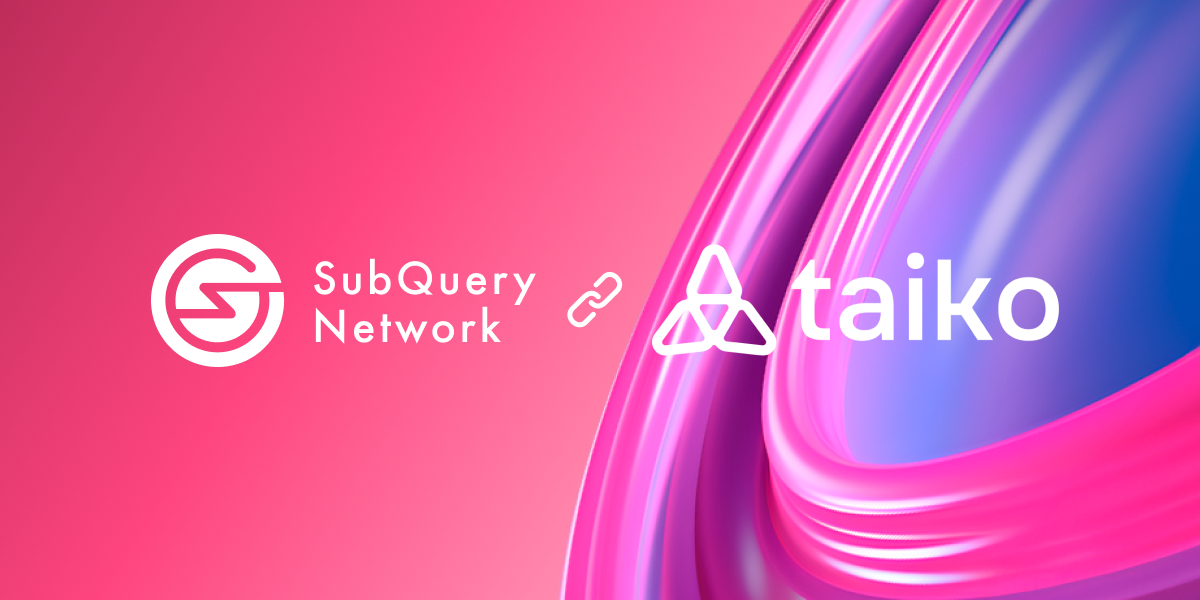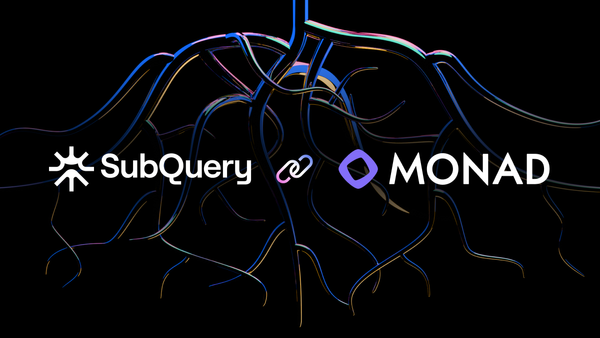We are excited to announce our support for Taiko, an Ethereum-equivalent (Type 1) ZK-EVM, maximally compatible with Ethereum.
SubQuery's indexing capabilities empower developers on Taiko to efficiently manage and query on-chain data, expediting development processes and facilitating rapid iterations, ultimately advancing the goal of onboarding the next billion users to the blockchain.
Developers building on Taiko can now harness SubQuery's versatile, high-speed, open, and decentralised data indexing solution. This empowers blockchain developers with crucial tools to efficiently manage and query on-chain data for their protocols and applications.
SubQuery simplifies the intricacies of backend operations, providing developers with a tailor-made API. This enables them to focus on product development and enhancing user experiences, without the need to allocate resources towards constructing their indexing solutions.
> "SubQuery is the reliable open-source, fast, flexible data indexer that every project need in order to build. We are satisfied with the services provided so far.”
— Joaquin Mendes, Global Head of Partnerships, Taiko
We’re always striving to provide developers with the most comprehensive and efficient indexing experience possible, including the open-source SDK, tools, documentation, and developer support that the SubQuery ecosystem provides. Taiko is also supported in SubQuery’s enterprise level managed service, which provides enterprise-level infrastructure hosting and handles hundreds of millions of requests each day.
> “We are thrilled to bring SubQuery’s flexible, fast, open, and decentralised data indexing solution to Taiko’s zk-EVM. By handling backend complexities, we enable developers to concentrate on what truly matters: product development and user experience!"
— Sam Zou, Founder and CEO of SubQuery
Why Use SubQuery?
SubQuery makes it easy to build a custom API for your dApp or smart contracts in minutes, providing clean indexed data to any service. The excellent SubQuery developer experience is flexible, with the ability to make external API calls or import external libraries from within your mapping functions, and better controls to run your projects in your own infrastructure with automated DOS (denial of service) mitigation controls. Additionally, we have yet to make plans to sunset our managed service.
SubQuery is designed to be fast. This adds up when you’re indexing millions of ledgers, and is something to consider when choosing your indexer. SubQuery achieves this by using multi-threading and optimisation of the store to reduce costly database writes. With faster sync times, developers can iterate faster and deliver features to market quicker.
SubQuery’s Support for Taiko
- Advanced Indexing of blocks, transactions, and logs
- Example Project (Taiko)
- Full support for Taiko in our free enterprise-level managed service
- Discord community (including technical support)
About Taiko
Taiko is a decentralized Layer 2 blockchain protocol that uses a Zero Knowledge Ethereum Virtual Machine (ZK-EVM). It is designed to be the most Ethereum-equivalent and general-purpose Zero Knowledge Rollup (ZK-Rollup).
The main objective of Taiko is to provide a scalable and efficient platform for decentralized applications (dApps) developers and users, allowing them to leverage the power of Ethereum Layer 1 (L1) without having to make any changes to their existing dApps.
Website | Twitter | GitHub | Discord | Blog | YouTube
About SubQuery
SubQuery Network is innovating web3 infrastructure with tools that empower builders to decentralise the future. Our fast, flexible, and open data indexer supercharges dApps on over 200 networks, enabling a user-focused web3 world. Soon, our Data Node will provide breakthroughs in the RPC industry, and deliver decentralisation without compromise. We pioneer the web3 revolution for visionaries and forward-thinkers. We’re not just a company — we’re a movement driving an inclusive and decentralised web3 era. Let’s shape the future of web3, together.
Linktree | Website | Discord | Telegram | Twitter | Blog | Medium | LinkedIn | YouTube







